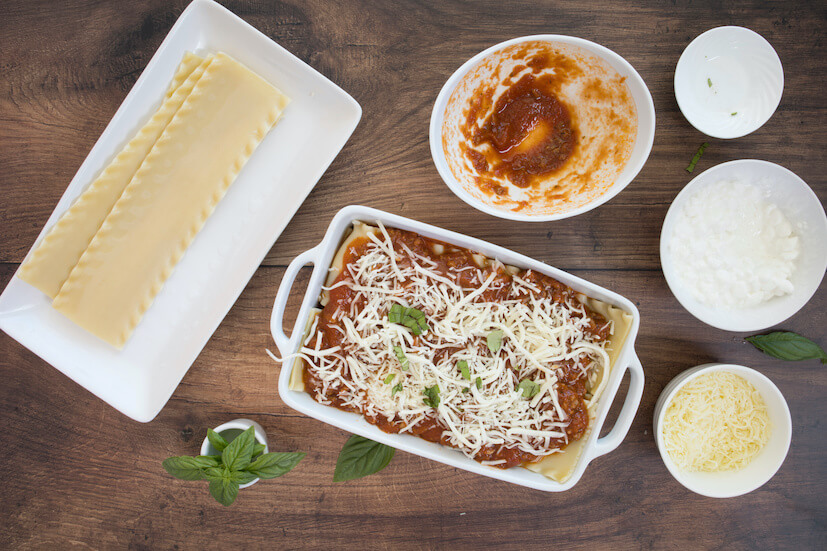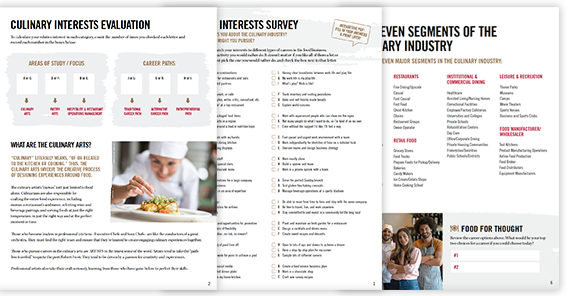How to Make Lasagna: Temperature, Time, and Technique
There’s nothing quite like pulling a bubbling pan of lasagna out of the oven. The fragrant sauce brings visions of summer tomatoes and the golden brown cheese begs you to dig in. easy to see why so many people consider lasagna a comfort food.
While lasagna’s many layers may make it seem complex, you can make this classic Italian dish pretty simply at home! We’re going to cover all you need to know about assembling and baking lasagna.
How to Make Lasagna
There are all sorts of variations of the Italian lasagna, and each person has their own methods and secret ingredients. Sauces may include marinara, ragú, or béchamel, and fillings can be meats, vegetables like spinach or mushrooms, and more. However, making lasagna always involves assembling repeating layers of lasagna noodles, filling, and sauce. After the layers are assembled, the lasagna heads into the oven to bake.
While making fresh pasta and sauce can be a worthy endeavor, not everybody has the time or desire to spend hours in the kitchen. With that in mind, we’re going to cover how to make a quick and easy lasagna that provides all of the flavor…with less work.
Gather Your Ingredients
Before you begin cooking, round up all the necessary ingredients.
- One box “oven ready” lasagna sheets
- One 16 oz jar tomato sauce or meat sauce
- Eight oz fresh mozzarella cheese
- One cup fresh ricotta cheese
- One-half cup freshly grated Parmigiano-Reggiano cheese
- One teaspoon freshly ground black pepper
Assemble the Lasagna
You can use any size baking dish for your lasagna, but a 13”x9” pan works nicely. Whatever size pan you choose, make sure it has sides that can handle the lasagna’s layers—two-inch tall sides generally work well.
Begin the assembly process by spreading a thin layer of sauce over the bottom of the pan. Next, add a layer of lasagna sheets on top of the sauce so the noodles are snug or slightly overlapping. Depending on the size of your pan, you may need to break the lasagna sheets to create pieces that will fit well. The next step is to add another thin layer of sauce on top of the sheet of noodles.
Then it’s time to add cheese! Dollop the fresh ricotta on top then use the back of a spoon to lightly spread it out. After you’ve added the ricotta, add some slices of fresh mozzarella and then some grated Parmigiano-Reggiano. The finishing touch is a few sprinkles of fresh ground pepper.
Repeat this layering process until the lasagna is however tall you like, but no more than a quarter of an inch away from the top of the pan. Finish the top with a layer of noodles, followed by a layer of sauce, some fresh mozzarella, and a sprinkle of Parmigiano-Reggiano.
Bake the Lasagna
Turn the oven on to 350ºF so it can preheat while you’re assembling the lasagna. Once the lasagna is ready, cover the pan with a layer of aluminum foil. Place the pan in the oven and allow it to bake for 30 minutes, then remove the foil so the cheese can brown.
The lasagna is done when the internal temperature reaches 165ºF. If the lasagna is not up to temperature but the cheese has started to burn, recover the pan with foil and place it back in the oven.
Cool and Serve
Remove the lasagna from the oven and allow the bubbling layers to cool for at least 15 minutes. Not only does this prevent diners from burning their mouths, but it can also make it easier to slice the lasagna into pieces.
Tips for Making Lasagna
To end up with a lasagna you’re proud of, follow these tips.
Choose a High-Quality Sauce
Skipping homemade sauce for a store-bought version won’t ruin your lasagna. However, remember that not all jarred sauces are created equal! Look for a tomato sauce that’s filled with higher-quality ingredients like tomatoes, garlic, onions, and olive oil, rather than fillers like sugar, canola oil, and high fructose corn syrup.
Keep the Layers Even
When you’re creating your layers, aim to keep them as uniform as possible. Rather than spreading one cup of ricotta on one layer and a quarter cup on the next, spread the same amount of cheese on each layer.
Allow to Cool
It’s tempting to dig into a pan of lasagna that’s just out of the oven, but this will only result in disappointment. When the cheese and sauce are at high temperatures, they’re likely to escape from the noodles once the lasagna is cut. Ensure the lasagna cools at least 15 minutes before cutting if you want nice slices that maintain their shape.
Keep Exploring New Dishes
When you’re done making lasagna, you may be ready to explore new recipes. That’s where online cooking classes come in! Choose your favorite dishes, then spend some time in your kitchen learning from professional chefs.
And if you find you want to take your culinary skills even further, culinary school may be for you. Escoffier offers both online and in-person culinary arts programs, so you can choose the best option for you.






Recent Comments